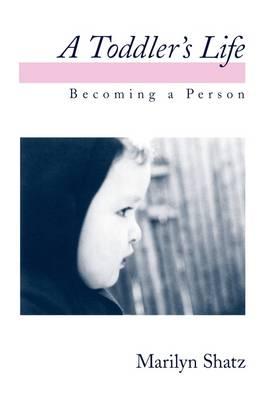Overview
What sets humans apart from other social animals? In an intimate account of child's development from age one to three, distinguished psychologist Marilyn Shatz answers this question by arguing that humans are unique in their ability to reflect on themselves, to compare themselves to others, and to self-correct. Language plays a central role in such processes because it offers the developing child a powerful tool for going beyond immediate experience to an understanding of unobservable states and motivations. In addition to her two decades of research in developmental psychology, Shatz draws on observations of her grandson Ricky to show how toddlers use their cognitive, social, and linguistic skills to understand and eventually to employ language as a means for successfully engaging others. Shatz expertly brings the dialogue of the toddler to life, plotting the turning points in Ricky's progress from fifteen-month-old one-word speaker to three-year-old articulate preschooler. The story of a child's increasingly sophisticated involvement with an expanding world is here generalized to other young children and skillfully interwoven with both empirical research and insightful commentary about the nature of human learning in a social setting. Parents, teachers, researchers, and students of developmental psychology and psycholinguistics will find this book to be an interesting and engaging study of early developmental processes.
Full Product Details
Author: Marilyn J. Shatz (Professor of Psychology, Professor of Psychology, University of Michigan)
Publisher: Oxford University Press Inc
Imprint: Oxford University Press Inc
Edition: New edition
Dimensions:
Width: 15.50cm
, Height: 1.60cm
, Length: 23.30cm
Weight: 0.349kg
ISBN: 9780195099232
ISBN 10: 0195099230
Pages: 240
Publication Date: 08 June 1995
Audience:
Professional and scholarly
,
Professional & Vocational
Format: Paperback
Publisher's Status: Active
Availability: Manufactured on demand

We will order this item for you from a manufactured on demand supplier.
Reviews
The author is at once a well-known researcher in the areas of children's cognitive and linguistic development, a skillful, sensitive observer of children's behavior, and an excellent writer who shows in this book that she can communicate as effectively to lay readers as to her fellow professionals. --John H. Flavell, Stanford University Charming and thought-provoking.... --Susan Goldin-Meadow, University of Chicago
The author is at once a well-known researcher in the areas of children's cognitive and linguistic development, a skillful, sensitive observer of children's behavior, and an excellent writer who shows in this book that she can communicate as effectively to lay readers as to her fellow professionals. --John H. Flavell, Stanford University Charming and thought-provoking.... --Susan Goldin-Meadow, University of Chicago
The author is at once a well-known researcher in the areas of children's cognitive and linguistic development, a skillful, sensitive observer of children's behavior, and an excellent writer who shows in this book that she can communicate as effectively to lay readers as to her fellow professionals. --John H. Flavell, Stanford University<br> Charming and thought-provoking.... --Susan Goldin-Meadow, University of Chicago<br>




